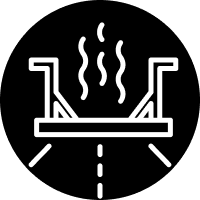Why Timely Asphalt Crack Repair Matters for Commercial Properties
Daily traffic and everyday wear can cause small cracks in your pavement over time. Timely crack repair from Pro-Pave Inc. helps prevent long-term damage to your roads, parking lots, and foundations.
Adding crack sealing to your yearly maintenance plan protects pavement, improves appearance, and extends the life of your surfaces. From small surface splits to foundation issues, our professional asphalt crack repair services save you time and money, helping you avoid the need for premature replacement.
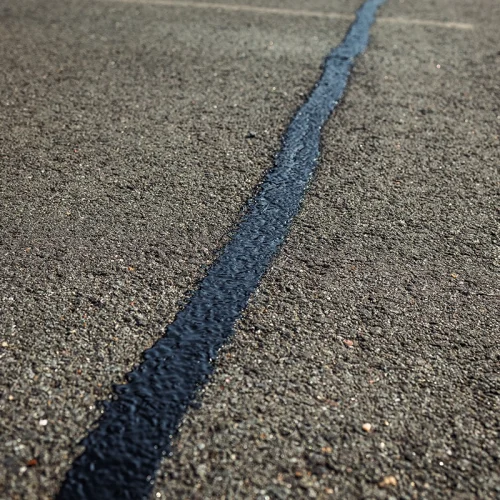
We’re Proud Members Of:










Common Causes of Cracks in Asphalt and Concrete Surfaces
Cracks in asphalt and concrete often start small but can quickly spread without prompt crack repair. In Virginia and D.C., constant weather changes and heavy use make paved surfaces especially vulnerable.
The most common causes include:
- Freeze-thaw cycles and moisture infiltration beneath the pavement.
- Soil settlement and poor compaction during installation.
- Heavy traffic loads and frequent vehicle use.
- Aging materials and a lack of regular crack sealing.
- Poor installation or drainage that allows water to accumulate under the surface.

Expert Asphalt Crack Repair and Patching Services
Pro-Pave Inc. is the most trusted paving contractor in Virginia and D.C.
At Pro-Pave Inc., we handle several types of asphalt crack repair using proven methods to extend the life of your pavement. Our team carefully inspects each site to determine the most suitable repair approach.
- Edge, block, and reflective cracks from surface stress or temperature changes.
- Longitudinal and transverse cracks from traffic wear or shifting bases.
- Alligator cracks from base layer failure often require complete asphalt reconstruction.
Our Asphalt Crack Repair Process
We use a proven process for all asphalt crack repairs, keeping you informed at every step:

Surface cleaning and debris removal
We begin by clearing dust, vegetation, and debris to create a clean working surface.

Routing cracks and prepping edges
This step ensures proper adhesion of sealants and fillers.

Applying hot rubberized crack filler
Industrial-grade materials are used to create a flexible, watertight seal.

Asphalt patching for large damaged areas
For severe surface damage, we employ durable asphalt patching solutions.

Sealing and compacting for a smooth finish
The repaired area is sealed and compacted for durability and a smooth appearance.

Benefits of Professional Asphalt Crack Repair
- Prevents costly resurfacing or reconstruction.
- Improves surface safety and appearance.
- Extends the lifespan of roads, parking lots, and commercial driveways.
- Protects against future water and UV damage.

Foundation Crack Repair for Structural Stability
Foundation cracks are a serious type of pavement damage. They can lead to severe structural damage and lower property value. Our foundation crack repair service stabilizes the pavement base to keep your property safe and prevent more serious issues.
Causes of Foundation Cracks
Foundation cracks are commonly caused by:
- Hydrostatic pressure and soil movement that push against foundation walls.
- Poor drainage or waterproofing that leads to water infiltration.
- Structural settlement and temperature fluctuations that cause the foundation to shift over time.
Our Foundation Crack Repair Process
Our proven foundation crack repair process provides a lasting fix for your pavement foundation.
- Detailed inspection of the affected area to identify the source and extent of cracking.
- Crack cleaning and injection of structural epoxy or polyurethane for strength and water resistance.
- Reinforcement or sealing as needed to stabilize compromised sections.
- Waterproofing the surrounding area to prevent future intrusion or pressure buildup.
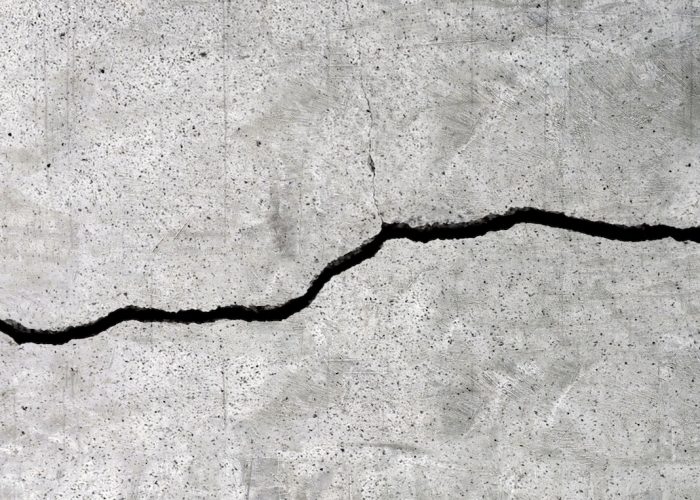
Why Timely Foundation Repair Matters
Delaying foundation repairs can cause expensive structural damage and safety risks. Fixing cracks early helps protect your property’s stability and value and prevents premature replacement.
Commercial Driveway Crack Repair
Commercial driveways experience constant wear from vehicle weight, weather changes, and regular use. Our crack repair services help restore strength to heavily trafficked areas, preventing larger failures that can disrupt your business.
Commercial Driveway Damage Causes and Early Warning Signs
Spotting early signs of commercial driveway damage can help you avoid costly reconstruction:
- Uneven settling or dips in the pavement
- Crumbling edges in high-traffic areas
- Standing water after rain
- Expanding or branching cracks across the surface

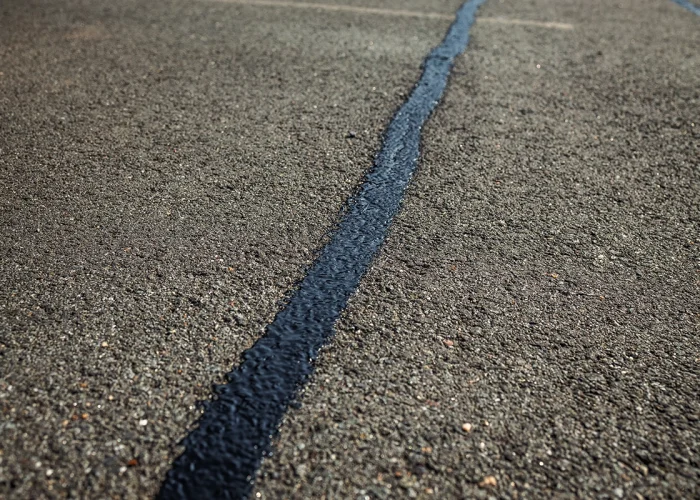
Commercial Driveway Crack Repair Techniques
Our team uses proven methods tailored to the size and severity of damage:
- Crack filler and asphalt patching for small defects or isolated damage
- Resurfacing for larger cracks or damage
- Sealcoating for long-term surface protection
Each commercial driveway crack repair project is completed quickly to minimize downtime and restore safe access for customers and employees.
Commercial Driveway Services
We provide custom maintenance and repair plans for property managers, retail centers, and facility owners. Our services keep your commercial driveways safe, durable, and looking their best.
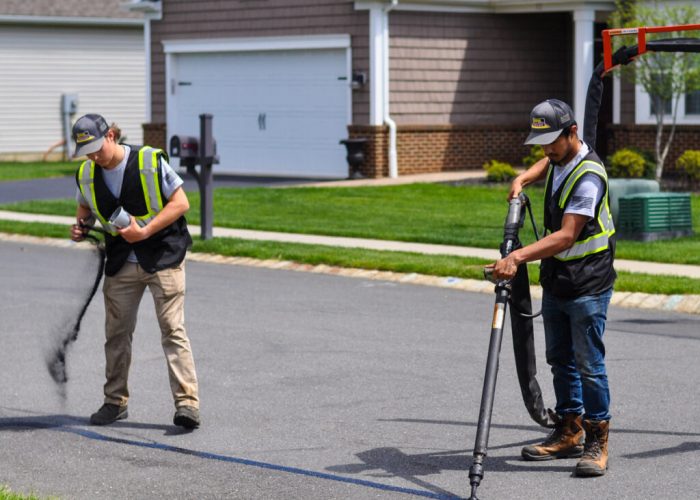
Our Proven Repair Process for All Surface Types
At Pro-Pave Inc., we use an advanced repair process that features industrial-grade crack sealants and curing materials to ensure long-term results. Here’s what to expect:

Inspection and evaluation of surface and base conditions.

Crack cleaning and surface preparation for proper adhesion.

Filler or injection application using commercial-grade materials.

Finishing and sealing for a uniform, durable surface.

Post-repair quality check to ensure results meet your standards.

Frequently Asked Questions About Crack Filling
Can I fix cracks myself with store-bought crack filler?
DIY crack filler can provide a short-term fix at best. Professional repairs use higher-quality products and proper techniques for long-lasting results.
How long does crack repair or patching take?
Most repairs are completed within a single day, depending on weather conditions and project size. Larger projects may require additional time for curing before the area can sustain traffic again.
How do I know if I need foundation crack repair?
If you see wall cracks, uneven floors, or water leaking into your basement, you may need foundation repair. If you notice any of these signs, reach out for professional crack repair right away.
How often should I reseal my pavement?
You should seal your pavement every 2–3 years to protect it from water, sun, and traffic damage. An annual inspection helps catch small cracks before they spread.
Explore Our Commercial Paving Services
From parking lots to sidewalks, transforming surfaces is our specialty. As the nation’s top pavement service provider, we tailor our solutions to suit each paved area on your commercial property. Check out our services to see which one is right for you.
Our Service Areas
Your Concrete & Asphalt Paving Experts
Pro-Pave Inc. Paving is the trusted name for reliable maintenance, repair, and installation services in communities throughout the Washington DC and Mid-Atlantic areas.
If you’re looking for trusted commercial paving contractors in Northern Virginia and the D.C. Metro Area, Pro-Pave Inc. is ready to deliver. Our team specializes in asphalt paving, concrete curbing, and long-term pavement maintenance solutions that are personalized for your property’s needs. Our contractors are proud to serve communities across Northern Virginia and the Mid-Atlantic including:
Our Office:
- Sterling
21563 Stonetree Court
Sterling, VA 20166
Have a job outside our coverage area? Our national Pave America partners can help.
Why Virginia & D.C. Property Owners Choose Us
Pro-Pave Inc. is the top choice for pavement repair and maintenance in Virginia and D.C. Here’s why property owners choose us:
- Decades of local experience with regional soil and weather challenges
- High-performance crack filler and patching materials
- Fast project turnaround with minimal business disruption
- Long-lasting durability backed by warranty options
- Tailored solutions for commercial properties across a variety of industries

